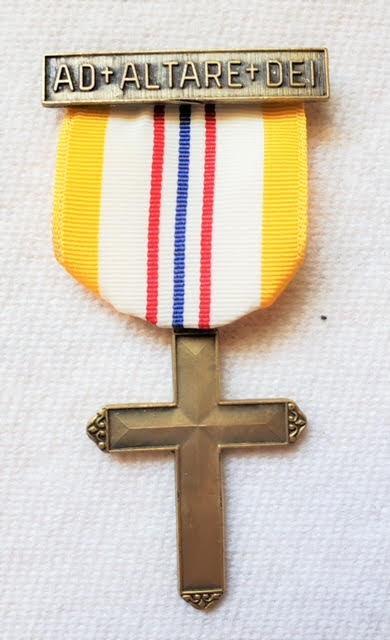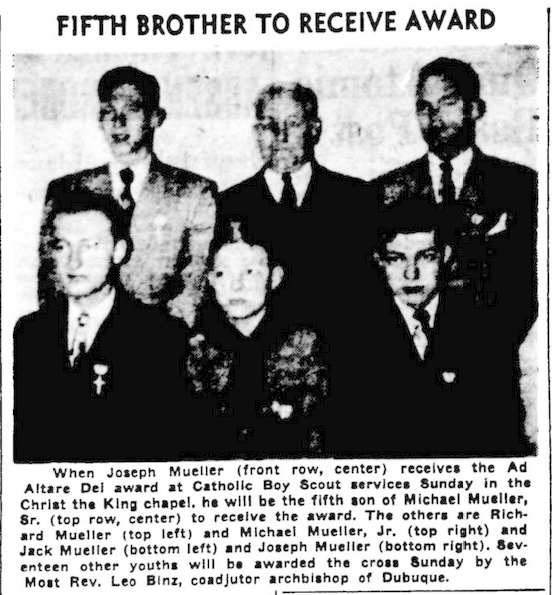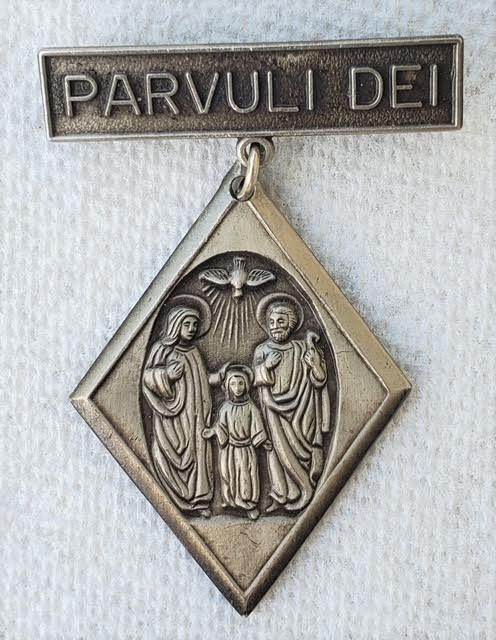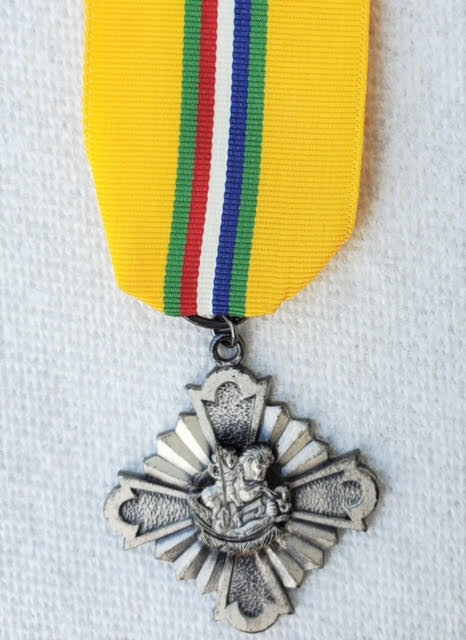Encyclopedia Dubuque
"Encyclopedia Dubuque is the online authority for all things Dubuque, written by the people who know the city best.”
Marshall Cohen—researcher and producer, CNN
Affiliated with the Local History Network of the State Historical Society of Iowa, and the Iowa Museum Association.
CATHOLIC BOY SCOUTS
In the process of research.
SCOUTING IN THE UNITED STATES
Founded in 1910, the Boy Scouts of America (BSA) is among the world's most prominent scouting groups and one of the largest and best-known youth organizations in United States history with 6.5 million members at the height of its popularity. More than 110 million Americans have passed through the ranks of the Boy Scouts over the course of the organization's century-plus history. In 2022 an estimated 2.5 million are active in the program.
At the turn of the 20th century, British military hero, writer, and educator Gen. Robert Baden-Powell began teaching the principles of military scouting to boys in a non-military setting, so they would be able to live off the land, track, observe, and conceal their movements in case of an invasion or a similar crisis. In 1908, Baden-Powell published Scouting For Boys, based on the military field manual he developed for soldiers during his career in the British service. Modified for boys during times of peace, the book became an instant sensation and began the youth scouting movement.
According to a long-held Boy Scouts legend, W. D. Boyce, a U.S. millionaire businessman and newspaper magnate became disoriented and lost in the dense fog of London, Emgland. A boy guided Boyce through the fog, showed him his way and—when offered—refused to accept a tip on the notion that he was compelled as a Scout by honor, not money, to help a stranger in need. W.D. Boyce returned to the U.S. and on February 8, 1910,founded the Boy Scouts of America (BSA). He was convinced that character development, outdoor recreation, and survival training were important if boys were going to grow into worthwhile men, particularly those who grew up in cities.
Later in 1910, the BSA made 200 Fifth Ave. in New York City its first national headquarters. Less than a year after its founding, the BSA was already recognized by influential polical leaders. That year, both John D. Rockefeller and Theodore Roosevelt honored Robert Baden-Powell with a dinner at the Waldorf Astoria.
Although the BSA's first CEO, James West, claimed that the Boy Scouts would not become an exclusively Christian organization, he established the concept of the BSA Religious Declaration from the organization's earliest days. It reads, in part,
The Boy Scouts of America maintains that no member can grow into the best
kind of citizen without recognizing an obligation to God and, therefore,
recognizes the religious element in the training of the member, but it is
absolutely nonsectarian in its attitude toward that religious training."
While the organization has historically encouraged diversity among faiths, atheists and agnostics would remain excluded from both leadership and membership from 1911 through the current day.
Widespread support of Scouting continued. In 1913, the Church of Jesus Christ of Latter-Day Saints officially became the first nationally chartered religious institution to make an official affiliation with the BSA. Scouting became the activity arm of the church's Mutual Improvement Association (MIA) for young men.
In 1915, former President Theodore Roosevelt applauded the organization's "unquestioned value to our country" and its focus on "manliness in its most vigorous form." Roosevelt became heavily involved with the BSA, serving as a committeeman for Troop 39 and a commissioner of the Nassau County Council, while also entertaining Scouts, awarding them medals, and participating in their scrap drives during WORLD WAR I. Roosevelt was honored as the first BSA honorary vice president, and he remains the only person ever to have been honored with the title of Chief Scout Citizen.
On June 15, 1916, President Woodrow Wilson signed a unanimously approved Congressional charter that granted federal recognition to the BSA. The charter was part of Title 36, which recognized "patriotic and national organizations." Wilson stated that he signed the charter because "every nation depends for its future upon the proper training and development of its youth."
Franklin Delano Roosevelt was the first president in history to have served as president of the Greater New York Council of the Boy Scouts of America. In 1934, hundreds of thousands of Boy Scouts heard and heeded President Roosevelt’s call to help those harmed by the GREAT DEPRESSION, collecting 2 million articles of clothing and other necessities for needy families.
Famed songwriter Irving Berlin fled oppression in Russia to come to the United States with his family when he was just 5 years old. Raised in poverty in New York City, the Jewish immigrant later wrote such popular music such as "White Christmas" and "God Bless America." Refusing to accept money earned from the patriotic tune, Berlin donated all earnings for the song—more than $10 million to date—to the Boy Scouts and Girl Scouts, with most going to troops in disadvantaged neighborhoods.
Thanks to the post-WORLD WAR II baby boom, and the rapid expansion of the suburbs, the BSA enjoyed a massive boost in membership during the 1950s. In 1948, about 2.5 million Boy Scouts claimed membership in the BSA. By 1960, that number had more than doubled to just over 5 million.
The election of John F. Kennedy in 1960 was unprecedented on several levels. JFK was the first Catholic president, the youngest president ever elected, and he defeated his opponent, Richard Nixon, in one of the closest elections in American history. To Boy Scouts across the country, however, Kennedy will always be remembered as the first Scout to serve as president and commander in chief. As a youth, Kennedy was a member of Troop 2 in Bronxville, N.Y. and later served as leader on the Boston Council.
In 1972, nearly one-third of all United States boys between the ages of 10 to 19, a full 6.5 million, were involved in scouting—-the peak of the organization's popularity and the beginning of a rapid decline. While the BSA's clean-cut, religious, civic-minded, and patriotic image reflected mainstream 1950s, much of the country’s youth viewed the organization as dated and out of touch as the Vietnam era came to a close.
Although churches had long sponsored the BSA, starting with the Mormons in 1913, the arrival of the 1980s—and the so-called "culture wars" witnessed a shift in BSA culture. By that time, churches—particularly the Catholic and Mormon churches—were the single biggest sponsors of Boy Scout troops. The BSA was widely viewed less as a secular youth organization and more as an arm of the churches that sponsored it. In the 1980s, just 2% of the country’s population were members of the Church of Jesus Christ of Latter-Day Saints, but one-fifth of all Boy Scouts were Mormon.
The 1990s saw the Boy Scouts reeling from controversy and lawsuits pertaining to the so-called "three Gs": God, gays, and girls. The Boy Scouts, a federally chartered organization that enjoyed unique access to government resources, began to suffer from ideas basic to the Catholic Church, Mormon Church, and other top BSA religious sponsors. The public also began to resent on the BSA's exclusion in both membership and leadership of girls, atheists, and LGBTQ people. In 2000, the Supreme Court ruled in favor of the BSA and against a well-liked and accomplished assistant Scoutmaster named James Dale, who was terminated when the Boy Scouts learned he was gay. The court ruled that as a private organization, the BSA was exempt from state anti-discrimination laws like the kind designed to protect LGBTQ people.
After a long period of intense external pressure and internal debate, the Boy Scouts in 2013 voted by a margin of 60-40 to end the longstanding ban on welcoming gay boys as members. The action "was widely seen as a milestone for the Boy Scouts, a symbol of traditional America," The New York Times reported at the time. While the Catholic Church, Mormon Church, and Southern Baptist Convention vocally opposed the move, organizations like the National Jewish Committee on Scouting, the Metropolitan Community Church, the Unitarian Universalist Association, the Episcopal Church, and the United Church of Christ had campaigned for the repeal and welcomed the change. In 2014, just nine months after the BSA lifted its ban on gay membership, Pascal Tessier became the first openly gay Boy Scout to earn the organization's highest honor.
Just one year after the Scouts began welcoming gay youth members, the BSA again made history by repealing the ban, with some limitations, on openly gay adult men as Scout Leaders. Although the country's opinions on LGBTQ rights had changed dramatically by 2015, the move was still highly controversial. That year, more than 70% of the country's 100,000 Scout units were still sponsored by religious groups.
In 2017, the Boy Scouts became even more inclusive when the BSA announced that for the first time, girls would be allowed to join as Cub Scouts and pursue the coveted rank of Eagle Scout. The board of directors voted unanimously to approve the change, which it said reflected the shift in popular American culture and attitudes. (1)
CATHOLIC BOY SCOUTS IN DUBUQUE
Scout Executive Walter Gunn, along with strong support from several Catholic leaders in the ARCHDIOCESE OF DUBUQUE, began the rapid growth of the Boy Scout movement in Dubuque. By the end of 1917, the Dubuque Council consisted of 118 registered Boy Scouts from seven troops. The number of Scouts registered would increase to 301 from sixteen troops by the end of 1918. By the end of 1919, there would be 356 Scouts registered with the Council and two troops that chartered directly with the national office.
The history entitled Boy Scouts of America A Centennial Edition stated that the Catholic Church allowed Catholic boys to join the Scouts if two conditions were met. There were to be Catholic troops under a Catholic Scoutmaster and there would be a chaplain appointed by the proper ecclesiastical authority for each Catholic troop. Many of the early troops were chartered to Catholic parishes. Local Catholic leadership became influential on the national level. Of the three original recipients of the Silver Beaver award from the Dubuque Council, one chaired the Catholic Committee on Scouting and another was an influential Catholic priest. A letter of endorsement for Scouting was obtained from the Vatican in 1919 and the KNIGHTS OF COLUMBUS made Scouting its official program for boys aged 12-15.
Once accepted by the Vatican, Catholic support for scouting was pronounced. In the August 28, 1919 issue of Scouting magazine, the author stated the aim of the National Catholic War Work Council (later the U. S. Council of Catholic Bishops) cooperating with the Boy Scouts of America had the goal of increasing the number of Scout troops chartered by the Roman Catholic churches to at least 1,000 within a year. The National Catholic Council approved of the idea of hiring fifteen men for the next year to help in the organizing effort. Nationally there were then 587 troops under the leadership of a Roman Catholic Scoutmaster with 300 of them chartered to Catholic churches. By 1937 every Diocesan Lay Chairman was entitled to be commissioned annually by the BSA as a Special National Field Scout Commissioner, a national commission. (2)
Two of the original troops chartered when the Dubuque Scout Council was chartered in 1917 belonged to Catholic parishes. Rev. John Adams THEOBALD served as the Scoutmaster of Troop Two, chartered to ST. RAPHAEL'S CATHEDRAL. ST. PATRICK'S CATHOLIC CHURCH chartered the second. F. X. Hogan, field commissioner for Catholic Boy Scout groups, arrived in Dubuque on November 19, 1919 to help with organization. At the time, five of the eight parishes in the city had troops; it was hoped the other three would organize soon. (3)
Local leadership accelerated in 1924 with Rev. Theobald becoming a member of the Catholic Committee on Scouting which, working with the Boy Scouts of America, developed the "Plan of Cooperation" which guided the partnership of the two organizations. (4) Important too was the announcement in 1929 that Archbishop James J. KEANE had been chosen to serve on the Bureau of Catholic Extension of the Scout Movement, part of the National Council of Catholic Men. (5)
Archbishop Francis J.L. BECKMAN appointed H. J. Lott as the Lay Chairman for the Archdiocese of Dubuque in 1938. Archbishop Beckman delivered the sermon at the July 4th Pontifical Mass at the base of the Washington Monument in 1937 during the National Scout Jamboree. At the time the honorary vice-chairman of the Bishop's Committee on Scouting, Archbishop Beckman also gave the benediction at the Grand National Convocation. In September, 1942 he addressed a meeting for Catholic leaders and civic leaders meeting to discuss the wartime situation. Archbishop Beckman stressed the need for a workable program between parents and children to maximize the support for the Scout program. Kenneth Cook, assistant to the director of the division of operations for the BSA, addressed methods of making a Catholic layman's committee more effective in wartime. (6)
From October 13-15, 1936 the 3rd Annual Conference of the Catholic Committee on Scouting was held at the HOTEL JULIEN. The conference, part of the 5th Annual Catholic Action Week, was attended by over forty Catholic Diocesan Scout Chaplains. The same week Catholic Action Week was held from October 11-15th. Activities ranged form service at church to working as orderlies at the Julien Hotel in two-hour shifts. (7)
Cooperation among the Scout Councils in the Dubuque diocese led to the first formal meeting on October 16, 1933 at LaSalle Hall in Cedar Falls. One of the goals from this meeting was to have, by February 1, 1934 a total of fifty Catholic troops and 1,000 Scouts in these Catholic troops. Dubuque had the target of 450 Scouts. The state-wide conference for the Catholic Boy Scout leaders were held in the Hotel Julien in Dubuque on April 11, 1948. (8)
Concern that Scouting might soften religious teaching was cleared stated in the 1952 Scouting for Catholics, a 56-page booklet printed by the Catholic Committee on Scouting. The following was stated:
Church units are definitely labeled as Catholic, Protestant, or Jewish. A
Catholic parent who permits his boy to join a unit affiliated with a non-
Catholic church has this matter definitely on his own conscience. This
creates an obligation for the Scout chaplain or the pastor to endeavor to
help that parent form the right conscience. Scouting for Catholic boys can
best be carried out in a closed church unit. (9)
Catholic Scout retreats were championed by Rev. Theobald who scheduled the first at Camp Burton on June 21-24, 1934. This was an outgrowth of a proposal he had submitted and discussed at the 1937 Chaplains Conference and had later distributed nationally. The paper provided advice on how to plan for, staff, and conduct the retreat. He used this format within the Dubuque diocese for many years. In 1940 three retreats were planned beginning on July 7th each with a different "camp master." (10) The popularity of retreats grew so that by 1952 courses were being taught nationwide at seminaries by the Catholic Youth Organization Director of Diocese Scout Chaplains. (11)
A "religious award/emblem" is not a Scouting award. It is a "church award" conferred upon a Scout by his pastor or religious leader. The first church award for any denomination was the Ad Altare Dei Cross pioneered by the Archdiocese of Los Angeles in the 1920s. To earn the emblem, a Scout had to have reached the First Class status and have served as an "altar boy" for 250 consecutive hours. A gold bar could be earned and placed across the ribbon after an additional 250 hours. In 1939 six Scouts from Troop 25 were the first in the City of Dubuque to receive the award. These Scouts included James Burd, Adrian Gerken, Donald Gerken, Leo Hartman, Richard Noel, and Charles Uthe. (12)
In 1940 the Dubuque Archdiocese set the following requirements for the award:
- 250 hours of service as an alter boy with up to 200 hours being earned prior to becoming a First Class Scout
- certification from the pastor or the sisters to attest to the boy's decorum and fitness
- at a minimum, the boy had to have earned the rank of First Class Scout
- knowledge requirements for the sacred vessels, knowledge of the Mass, and identification of its various parts
By the spring of 1942, there had been 2,584 crosses awarded nationally. Gradually the requirements changed. Being an altar boy was dropped with such replacements as singing in the choir, attendance at such groups as the Junior Holy Name Society, and participating in parochial religious study clubs.
The idea of conferring a religious emblem to Cub Scouts was first presented in 1952 at the 12th Scout Chaplains Conference. Unfortunately for the award, the idea was tabled until an award could be designed and presented to adults. Monsignor George Dowd finally met with a committee which determined the philosophy behind what became the Parvuli Dei Award which was first presented in the Dubuque diocese on February 14, 1954.
Awards for Scouts led to increasing interest in awards being available for adult leaders. The idea of using the Ad Altare Dei Cross to honor adults who had made outstanding service to youth was considered. The result was the creation of the Saint George Award which was first presented nationally in 1954. In 1955 Archbishop Leo BINZ made the first presentation of the award in Dubuque to Leo Dunbar of Cedar Falls, Don Maresh of Cedar Rapids, and Arnold Stierman of Dubuque. The third annual presentation of the award included Leo Mohr of Dubuque, Frank Drahozal of Cedar Rapids, John Koch of Waterloo, and Arnold Staudt of Marble Rock. (13)
It was a tradition in the Dubuque diocese for many years to hold a mass and present emblems to all Catholic Scouts who had earned a religious emblem the previous year and St. George emblems to adults. (14) In January, 2004 Archbishop Jerome G. HANUS presented nearly 500 Catholic Boy Scouts with their emblems at a special Mass sponsored by the Catholic Committee on Scouting at St. Raphael's Cathedral. (15)
In 2017 Catholics concerned with changes in Scouting policies were encouraged to investigate "opportunities for outdoor adventure combined with faith-based opportunities to learn about Catholicism." These opportunities included The Troops of St. George with "more than 40 troops nationwide." Kepha, a second choice, claimed three patrons--St. John Bosco, St. Theresa of Calcutta, and Blessed Pier Giorgio Frassati. In both of these, fathers and sons participate in activities together. The third group was the Columbian Squires, a junior division of the Knights of Columbus, for boys aged 10 through 18. Programs were designed to benefit the Church and community as well as provide recreational and social activities. (16)
In response to alternatives and harsh criticism of Scouting, the National Catholic Committee on Scouting issued in April, 2020 the "Guide to Catholic Scouting, adapted from "Scouting in the Catholic Church" (1963) (17)
---
Sources:
1. Lisa, Andrew, "Thirty Major Moments in Boy Scout History," Stacker, Online: https://stacker.com/stories/2446/30-major-moments-boy-scouts-history
2. Lewis, Paul W. Scouting in Northeast Iowa 1910-1959, Dubuque, IA, S4 Carlisle Publishing Services, 2017, p. 21
3. "Catholic Boys to Form Scout Troops," Dubuque Telegraph-Herald, November 19, 1919, p. 12
4. Ibid., p. 225
5. Ibid., p. 229
6. Lewis, p. 228
7. "Service Schedule Drafted for Catholic Boy Scouts," Telegraph-Herald, Oct. 4, 1936, p. 15
8. Lewis, p. 241
8. Ibid., p. 233
10. "Three Catholic Scout Retreats," Telegraph-Herald June 18, 1940, p. 10
11. Ibid., p. 239
12. Lewis, p. 242
13. Ibid., p. 247
14. Ibid., p. 248
15. "Special Mass Set for Boy Scouts," Telegraph Herald, January 24, 2004, p. 13
16. Schiffer, Kathy, "Concerned About the Boy Scouts? There Are Catholic Alternatives," National Catholic Register, Online: https://www.ncregister.com/features/concerned-about-the-boy-scouts-there-are-catholic-alternatives
17. "Guide to Catholic Scouting," Online: https://www.scd.org/sites/default/files/2020-05/Guide%20to%20Catholic%20Scouting%20-%202020.pdf





